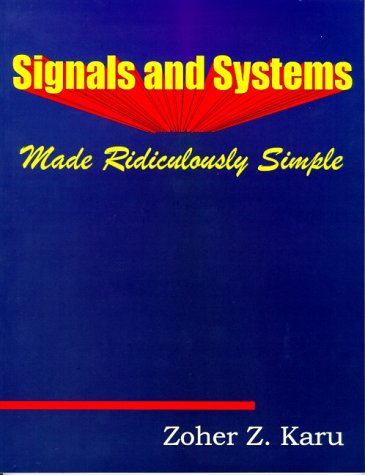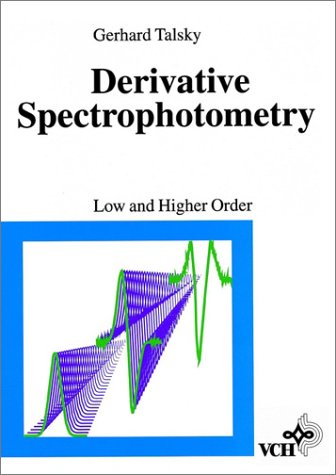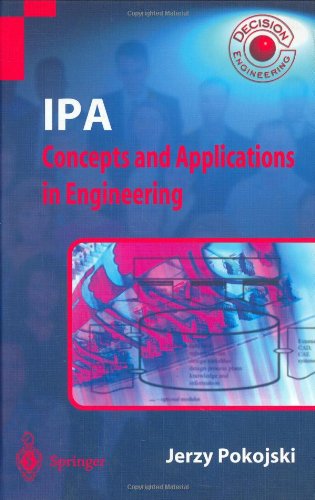James Riley Couper9780824740368, 082474036X
Table of contents :
Process Engineering Economics……Page 1
Preface……Page 7
Contents……Page 9
Introduction……Page 13
Contents……Page 0
REFERENCES……Page 17
2.1 BUSINESS PLANS……Page 18
2.2.2 External Sources……Page 20
2.2.2.1.2 Intermediate Debt…….Page 21
2.2.2.2 Stockholders’ Equity……Page 22
2.3 DEBT VERSUS EQUITY FINANCING……Page 23
REFERENCES……Page 24
Financial Statements……Page 25
3.1 ACCOUNTING CONCEPTS AND CONVENTIONS……Page 26
3.1.3 Data Recording……Page 27
3.2 JOURNAL AND LEDGER EXAMPLE……Page 28
3.3.1 The Balance Sheet……Page 35
3.3.2.3.1 Other Income…….Page 41
3.3.4 Changes in Financial Position……Page 42
3.3.6 Relationship Between the Balance Sheet and the Income……Page 45
3.3.7 The 10K Report……Page 51
3.4 FINANCIAL RATIOS……Page 52
3.4.1 Liquidity Ratios……Page 53
3.4.3 Activity Ratios……Page 54
3.4.4 Profitability Ratios……Page 55
3.4.6 Other Financial Information……Page 56
3.5.1 Problem Statement……Page 57
3.6 SUMMARY……Page 58
PROBLEMS……Page 60
Estimation of Capital Requirements……Page 65
4.2 FIXED CAPITAL INVESTMENT……Page 66
4.2.1.2 Quality of an Estimate……Page 67
4.2.1.3.1 Data Presentation…….Page 71
4.2.1.4 Equipment Sizing……Page 77
4.2.1.5.1 Marshall and Swift Cost Index (M&S)…….Page 79
4.2.1.5.2 Chemical Engineering Index (CE)…….Page 80
4.2.1.5.5 Vatavuk Air Pollution Control Cost Index (VAPCCI)…….Page 81
4.2.1.6 Which Index to Use……Page 82
4.2.1.8 Effect of Inflation and Escalation……Page 83
4.3.1 Order-of-Magnitude Estimates……Page 84
4.3.1.1 Turnover Ratio……Page 85
4.3.2.1 Lang Method……Page 90
4.3.2.2 Hand Method……Page 91
4.3.2.3 Wroth Method……Page 93
4.3.2.4 Brown Method……Page 96
4.3.3.1 Chilton Method……Page 100
4.3.3.2 Peters and Timmerhaus Method……Page 104
4.3.3.5 Miller Method……Page 105
4.3.3.6.1 Other Factor Methods…….Page 106
4.3.3.6.2 Step-Counting Methods…….Page 108
4.3.4.1 Hirsch and Glazier Method……Page 109
4.3.4.2 Guthrie Method……Page 111
4.3.5.1 Richardson Rapid Estimating Method……Page 113
4.4.1 Scope……Page 114
4.4.2.1 Process Contingency……Page 116
4.5 OFFSITE CAPITAL……Page 117
4.6 ALLOCATED CAPITAL……Page 118
4.7.1.1 Percentage of Capital Investment Methods……Page 120
4.7.1.2 Percentage of Sales Method……Page 121
4.7.1.3 Inventory Method……Page 122
4.8 START-UP EXPENSES……Page 124
4.9.1 Paid-up Royalties and Licenses……Page 125
REFERENCES……Page 126
PROBLEMS……Page 129
5.1 TERMINOLOGY……Page 135
5.2 MANUFACTURING EXPENSE SHEET……Page 136
5.3.1 Raw Material Expenses……Page 138
5.3.2 Utilities……Page 140
5.3.3 Labor Expenses and Productivity……Page 141
5.3.4 Maintenance……Page 142
5.3.9 Clothing and Laundry……Page 143
5.3.14 Total Direct Manufacturing Expense……Page 144
5.3.16 Total Indirect Expense……Page 146
5.3.19 Total Product Expense……Page 147
5.3.21 Total Operating Expense……Page 148
5.4 COMPANY EXPENSE REPORTS AND EXPENSE……Page 152
5.5 OPERATING EXPENSE SCALE-UP……Page 153
5.6 OPERATING EXPENSE INDEX……Page 155
PROBLEMS……Page 156
6.1 INTEREST RATE……Page 163
6.3 SIMPLE INTEREST……Page 164
6.4 COMPOUND INTEREST……Page 165
6.5.1 Compounding – Discounting……Page 166
6.5.2.1 Single-Payment Compound Amount Factor……Page 167
6.5.2.3 Uniform Series Compound Amount Factor……Page 169
6.5.2.5 Uniform Series Present Worth Factor……Page 171
6.5.2.6 Uniform Series Capital Recovery Factor……Page 172
6.7 CHANGING INTEREST RATES……Page 175
6.8 SUMMARY OF COMPOUND INTEREST FACTORS……Page 176
6.9.1.1 Single-Payment Compound Amount Factor……Page 177
6.9.1.3 Uniform Series Compound Amount Factor……Page 178
6.9.1.5 Uniform Series Present Worth Factor……Page 179
6.10 EFFECTIVE INTEREST WITH CONTINUOUS COMPOUNDING……Page 180
6.12 CAPITALIZED COST……Page 181
PROBLEMS……Page 182
7.1 DEPRECIATION……Page 185
7.2 TERMINOLOGY……Page 186
7.3 HISTORY OF DEPRECIATION METHODS……Page 187
7.4.1 Straight-Line Method……Page 191
7.4.2 Declining-Balance Method……Page 192
7.4.3 Unit-of-Production Method……Page 193
7.4.4 Modified Accelerated Cost Recovery System (MACRS)……Page 194
7.4.5 Other Depreciation Methods……Page 196
7.5 DEPLETION……Page 197
7.5.1 Cost Depletion……Page 198
7.7.1 Income Taxes……Page 199
7.7.2 Capital Gains Tax……Page 200
REFERENCES……Page 201
PROBLEMS……Page 202
8.1 CASH FLOW MODEL……Page 203
8.2 COMPARISON OF ALTERNATIVES……Page 210
8.3 CUMULATIVE CASH POSITION PLOT……Page 212
8.4 EFFECT OF THE TIME VALUE OF MONEY ON THE CASH POSITION PLOT……Page 217
8.5 EFFECT OF CASH FLOW ON COMPANY OPERATIONS……Page 221
PROBLEMS……Page 222
Estimate of Profitability……Page 228
9.2 PROJECT CLASSIFICATION……Page 229
9.3 MINIMUM ACCEPTABLE RATE OF RETURN……Page 230
9.4.1.1 Return on Investment……Page 232
9.4.1.3 Payout Period (POP)……Page 233
9.4.1.4 Payout Period with Interest (POPI)……Page 234
9.4.1.5 Net Present Worth (NPW)……Page 235
9.4.1.7 Internal Rate of Return……Page 237
9.4.1.9 The NPW – IRR Controversy……Page 239
9.4.2 Qualitative Measures……Page 240
9.4.2.1.4 Legal Constraints…….Page 241
9.4.2.2 Attempts to Quantify Intangible Factors……Page 242
9.6 ILLUSTRATIVE PROBLEM……Page 243
REFERENCES……Page 248
PROBLEMS……Page 249
Sensitivity and Uncertainty Analysis……Page 253
10.1.1 Break-Even Analysis……Page 254
10.1.2 The Strauss Plot……Page 256
10.1.3 Relative Profitability Plot……Page 258
10.1.5 Discussion of Sensitivity Analyses……Page 260
10.2 UNCERTAINTY ANALYSIS……Page 261
10.2.2.1 Best Guess……Page 262
10.2.2.3 Monte Carlo Method……Page 263
REFERENCES……Page 268
PROBLEMS……Page 269
11.1 INFORMATION REQUIRED……Page 272
11.1.3 Total Operating Expenses……Page 273
11.1.4 Marketing Information……Page 278
11.1.6 Measures of Profitability……Page 279
11.1.8 Sensitivity Analysis……Page 280
11.1.9 Uncertainty Analysis……Page 281
11.2 PROCEDURE……Page 282
11.3.3 Marketing Data……Page 284
11.3.4 Inflation……Page 285
11.3.8 Concluding Comments……Page 286
11.4 EXAMPLE OF A FEASIBILITY ANALYSIS……Page 287
PROBLEMS……Page 297
Choice Between Alternatives and Replacement……Page 304
12.1.1 Significant Considerations……Page 305
12.1.2 Flows of Money……Page 306
12.1.6 Inflation……Page 308
12.2.1 Net Present Worth……Page 309
12.2.2 Rate of Return……Page 311
12.2.3 Capitalized Cost……Page 312
12.2.4 Equivalent Uniform Annual Cost……Page 315
12.3 OUT-OF-POCKET EXPENSES……Page 318
12.4 INCREMENTAL ANALYSIS……Page 319
12.5 REPLACEMENT THEORY……Page 323
12.5.2 Replacement Example……Page 324
12.6 OPPORTUNITY COST……Page 328
REFERENCES……Page 329
PROBLEMS……Page 330
The Economic Balance……Page 335
13.2 PRACTICAL CONSIDERATIONS……Page 336
13.3 GENERAL PROCEDURE FOR FINDING OPTIMUM CONDITIONS……Page 337
13.3.1 Variable Operating Expenses……Page 338
13.3.2 Fixed Operating Expenses……Page 339
13.4 PROCEDURE FOR SOLVING SINGLE-VARIABLE BALANCES……Page 340
13.4.1 Analytical Method……Page 341
13.4.2 Graphical Method……Page 342
13.5 PROCEDURE WITH MORE THAN ONE CONTROLLABLE VARIABLE……Page 345
13.6 INTERACTIVE SYSTEMS……Page 351
13.7 SUMMARY……Page 354
PROBLEMS……Page 357
Concluding Comments……Page 367
Bonds:……Page 370
Depreciation:……Page 371
Gross domestic product:……Page 372
Operating margin:……Page 373
Value added:……Page 374
Working capital:……Page 375
Rules of Thumb1……Page 376
COMPRESSORS AND VACUUM PUMPS……Page 377
COOLING TOWERS……Page 378
CRYSTALLIZATION FROM SOLUTION……Page 379
DISTILLATION AND GAS ABSORPTION……Page 380
DRYING OF SOLIDS……Page 383
EVAPORATORS……Page 384
EXTRACTION, LIQUID – LIQUID……Page 385
FLUIDIZATION OF PARTICLES WITH GASES……Page 386
HEAT EXCHANGERS……Page 387
MIXING AND AGITATION……Page 388
PARTICLE SIZE ENLARGEMENT……Page 389
PUMPS……Page 390
REFRIGERATION……Page 391
UTILITIES: COMMON SPECIFICATIONS……Page 392
VESSELS (DRUMS)……Page 393
VESSELS (STORAGE TANKS)……Page 394
Equipment Cost-Capacity Algorithms1……Page 395
REFERENCE……Page 414
Condensed Continuous Interest Tables……Page 415
Hirschmann-Brauweiler Tables……Page 417







Reviews
There are no reviews yet.